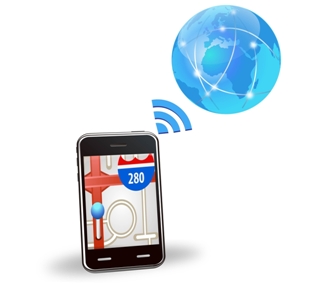For those of us of a certain age, you may remember the rather naughty but infectious segment of the popular Monty Python’s Flying Circus TV comedy show, “And now for something completely different.” (Note: Please click back and finish reading this article once you are done laughing).
Falling into that category is an announcement from crowd-powered mobile applications company CrowdOptic. It is joining forces with researchers at Carnegie Mellon University's Silicon Valley campus who are creating technology for "smart" buildings and "smart" environments based on the Internet of Things (IOT). Continuing to push the envelope of the value of augmented reality, this is something completely different.

Image via Shutterstock
A new take on find me, follow me!
Carnegie Mellon Silicon Valley researchers have been developing technology to link mobile users to the "smart environment" to provide novel and useful targeted information and services. CrowdOptic's focus of attention technology, literally gathering and creating new capabilities based on real-time crowd-sourced information, will be used to create enhanced functionality based on knowledge of what people are paying attention to.
The first project of the collaboration will be development of new mapping technology that would allow users of wearable electronic devices to create and share visual breadcrumb trails in order to find and follow each other in indoor locations and in apps such as Google Maps. In fact, you might wish to add the term visual breadcrumb to your vocabulary. This one looks like it has legs.
Simply put, unlike current mapping programs that offer guided turn-by-turn GPS navigation, this new capability would allow users to see and follow a visual trail within their line of sight through the viewer of a wearable smart device like Google Glass.
What is breadcrumbing?
Breadcrumbing: The process by which a GPS-enabled device collects historical location data including route, speed, direction and stops. The data are then presented on a map as a breadcrumb trail of position markers.
CrowdOptic and Carnegie Mellon Silicon Valley are working to integrate breadcrumbing into wearable devices by making the feature both visual and dynamic.
"Wearable devices are going to change the way people interact with maps," said CrowdOptic CEO Jon Fisher. "Routes and directions will need to be delivered visually to quite literally point the way and they will need to continually adjust in real time to always reflect the safest, most efficient path."
Dynamic factors include the wearer's sightline, interaction with other wearers, and changing conditions of the environment, as reflected by the changing paths and behaviors of other wearers. CrowdOptic has patented the technology (U.S. Patent No. 8,527,340) that captures these dynamic shifts in where people are looking through their electronic devices like Google Glass.
Carnegie Mellon Silicon Valley expects knowledge of users' focus of attention to support interactions based around individual situational awareness, which will support enhanced targeting of information and services from the "smart" environment to the user. For those of you like myself who rely on smartphone navigation, think of this as Waze on steroids.
In its discussion of the collaboration, CrowdOptic says it envisions powering apps that would lead people to locations where groups are congregating, news is breaking, or friends are meeting. The technology would allow friends to share their routes with each other, especially in complex multi-building environments such as universities or shopping malls, and it would allow people to reroute themselves in response to changing environmental conditions and the paths of other Glass wearers.
Both CrowdOptic ‘s Fisher and Martin Griss, director of CMU Silicon Valley, expressed their delight in working together.
Fisher stated, "We are immensely pleased to have partnered with one of the top technology universities in the world and a team which has distinguished itself by its unique leadership in exploring new applications of smart sensor technology."
Griss added that, “We are excited by the opportunity to work with CrowdOptic to explore new applications in emergency response and in making 'smart' buildings smarter…The ability to precisely detect the location, orientation and history of movement of individuals afforded by this technology will enable many new context-aware services."
"We see opportunities to use augmented reality to overlay important information from sensors, people, and building services, precisely targeted to where the individual is looking. This will significantly enhance users' experiences, while optimizing service delivery," says Dr. Steven Rosenberg, associate director of CMU Silicon Valley.
It makes sense that the first collaboration is on in-building mapping, the blind spot of GPS. While the CMU folks are focusing on smart building applications, the not-so augmented reality is that the digitally adept younger generations are going to use breadcrumbs as the media for enhanced socialization, and retailers are going to love this. “Attention K-Mart Shoppers! 10 minute microwave oven sale in aisle #5” is going to get a nice tweak.
This is not to minimize the enterprise uses by any stretch of the imagination. In fact, the applicability in disaster recovery scenarios alone could be invaluable. It is merely to note that the big market will ultimately be the mass market and something completely different this way comes.
Edited by
Rich Steeves  QUICK LINKS
QUICK LINKS